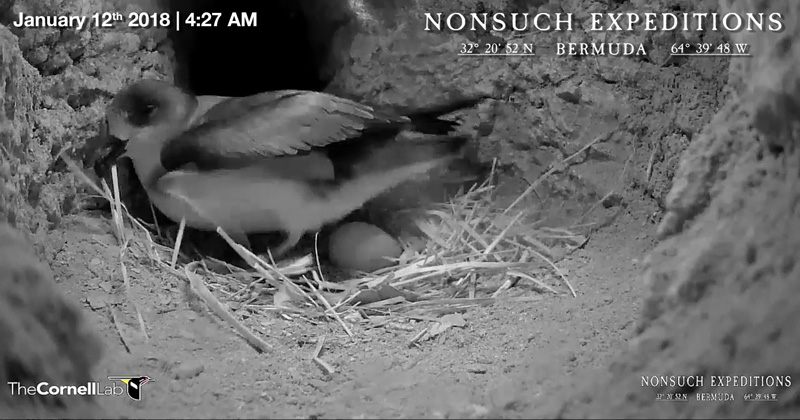Video: Cahow Lays Egg During Live Stream
An extremely rare nesting event was streamed live from Nonsuch Island this weekend when their ‘star’ Cahow laid her single egg, officially starting the sixth CahowCam Season.
Nonsuch Expeditions Team Leader J-P Rouja said: “Our CahowCam broadcasting live from the underground nesting burrow on Nonsuch Island was being monitored in anticipation of her return [which Jeremy had predicted to be last night] however the Bermuda Team had just signed off for the night when she burst in at 3.00am. The Cornell Team currently in Hawaii installing an AlbatrossCam were still watching along with many of our regular followers so promptly tweeted and alerted us of the event.
“Last season through our Cornell partnership we reached 600,000 viewers who consumed 8.5 million minutes of video over the 5 month nesting season including thousands of people watching when the egg hatched in March. As we expand the project including new ways for our viewers and students to engage we expect to greatly exceed those numbers this Season.”
“If you would like to be notified of this and other significant Cahow milestones sign up for our Newsletter and select the CahowCam alert option.
Chief Terrestrial Conservation Officer Jeremy Maderios said: “Last year, the male returned by Jan. 15th, and took over incubation for the next 2 1/2 weeks while the female returned back out to sea to feed and regain her strength. The pair then alternated incubation duties until the egg hatched on March 2nd, 51 days after being laid.
“After a record-breaking nesting season last year with 61 chicks fledging out to sea, we seem to be on track for breaking even more records this year. As of January 12th, the Senior Conservation Officer had confirmed that about two thirds of the breeding pairs on the nesting islands had so far returned and were incubating eggs, including 11 breeding pairs on Nonsuch Island.
“The remainder should hopefully return over the next 2 weeks. The majority of incubating adult Cahows he examined were heavier than normal, with some male birds approaching 500 grams in weight. This indicates that the birds had found good feeding conditions north of the Gulf Stream over the last month.”
Read More About
Category: All, Environment, News, Videos




Stunning! Beautiful nature at its best.